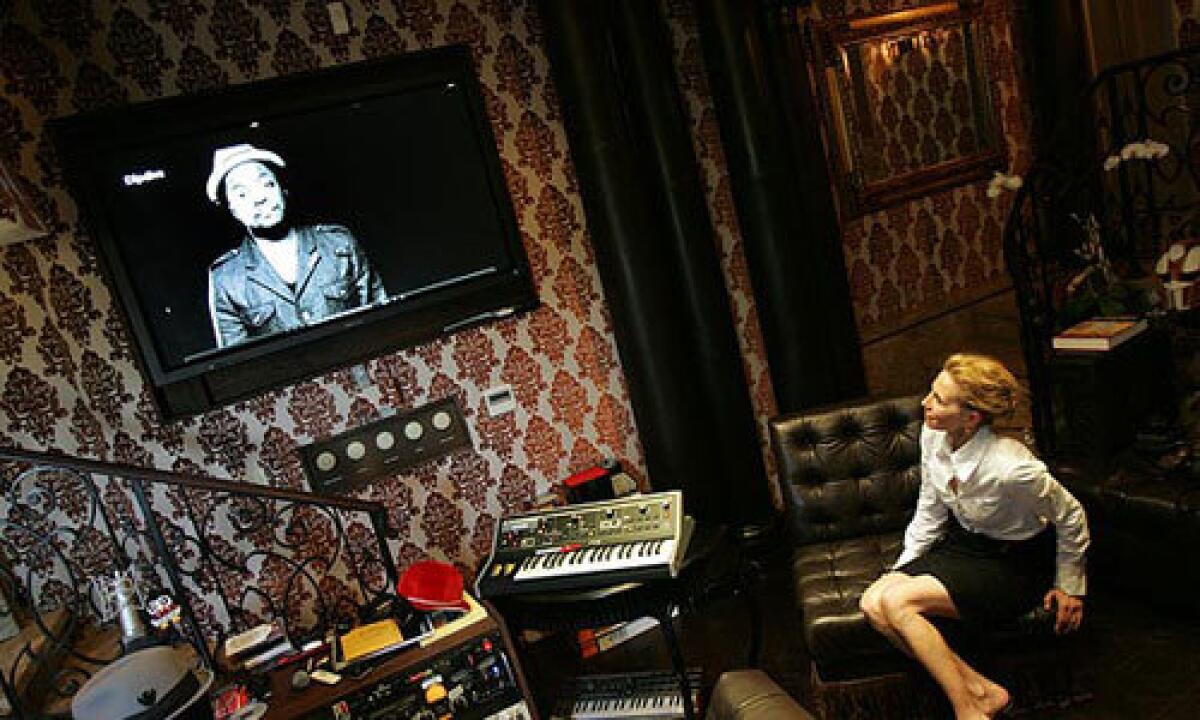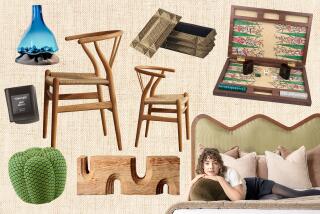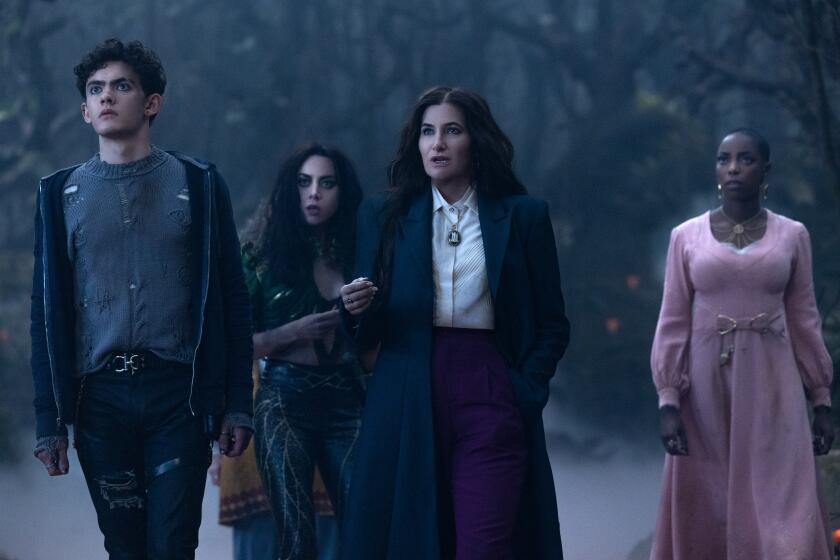Black Eyed Peas’ will.i.am creates a lavish home studio

Black Eyed Peas founder will.i.am is a yes-we-can man. After setting the words of Barack Obama’s famed campaign speech to music and creating the viral Dipdive and YouTube video viewed more than 35 million times, the multiplatinum recording artist has shown the same conviction in finishing his home recording studio in Los Angeles.
“Unless something is physically impossible, will doesn’t understand the words ‘it can’t be done,’ ” says interior designer Liana Reid, who outfitted the bottom level of his three-story 1920s Spanish house in Los Feliz as a lavish recording suite.
“I sensed that will was into funky classics made with fresh materials and wanted things to be custom,” she says. “I would tell him it might take this long and that much money, and he’d say, ‘Let’s make it happen.’ ”
For her client, the studio is not only a place to work but also an affirmation of how the Los Angeles native’s hard work has paid off.
“I’m from the projects,” says will.i.am, whose band just wrapped 26 straight weeks at No. 1 on Billboard’s Hot 100 chart -- 12 for “Boom Boom Pow,” followed by 14 for “I Gotta Feeling.”
“My neighbors are on drugs, in prison or dead. What are the odds for me to be living in this house, when a few generations back I might have been working here?”
Nearly three years in the making, the home is decidedly eccentric and, at times, unabashedly over the top -- a playful antidote to the sterile design of most recording facilities. It houses state-of-the-art equipment within the neo-Baroque style that’s fashionable in nightclubs and boutique hotels.
Creating it required a significant amount of construction. Crews dug to create a new foundation for a cathedral-like control room more than 12 feet tall. Other spaces were gutted to conceal electronics or were made into vocal and drum recording booths and a lounge.
Acoustic architect Vincent Van Haaff of Waterland Design, an L.A. firm known for its studios, built the recording rooms based on the physics of sound. Consequently, Reid’s interior design was often driven by a need to create symmetrical elements and surfaces that refracted or absorbed noises.
Will.i.am also wanted the rooms to look as if they might have been original to the house.
“Instead of plywood or that ugly egg-crate foam that’s used to baffle sound in a control room, we built columns and covered them in leather,” Reid says.
That was merely a structural element. When it came to decoration, the well-traveled will.i.am got inspiration from historic homes and luxury hotels in London and Paris.
“I am not into boxes with cement floors and square couches,” he says. “People say, ‘Wow, check this out, it’s contemporary.’ I say, ‘Wow, this looks unfinished.’ ”
Visitors enter the studio from a travertine stairway, arriving in a rotunda where the floor is adorned with different types of stone cut to form will.i.am’s monogram. (Cost: around $8,000 including installation.)
To enter the control room, wave a hand and glass doors slide open. “It’s very James Bond,” Reid says.
Inside, at a landing overlooking the studio, a groin vault ceiling is reminiscent of those found in Romanesque and Gothic churches. Twin staircases -- the custom-built wrought-iron railing emblazoned with a gold-leafed “W” -- lead to the soundboard. Reid covered the vast console in leather and set it on carved wooden lion’s paws.
The floor is Brazilian cherry with a rug made from leather squares. On top: a tufted, fringed leather sofa and two matching slipper chairs that Reid describes as “French 1940s modern.”
Elsewhere, the décor is a twist on Tudor. The designer upholstered the walls in the control room and recording booths with a raised velvet damask fabric from Diamond Foam & Fabric that she dyed a rich brown.
“It’s a new take on an old idea,” she says of the fabric. “Henry VIII would love it here.”
For lighting, she added sconces by the Dutch designers Brand van Egmond that look like bronzed shrubbery.
In the powder room, flocked wallpaper covers the walls. The floor is black granite, with a pedestal sink and ebony toilet to match.
“It’s a bordello look,” Reid says with a laugh. “Pimped-out but elegantly.”
In the lounge area, which has yet more flocked wallpaper -- even on the refrigerator -- the mood is lighter and brighter.
“After seeing the movie ‘Horton Hears a Who!’ I called Liana and told her that’s what I wanted to do,” will.i.am says, pointing out a hallway dotted with antique French mirrors.
Silk drapes with elaborate trimmings hang over arched Spanish windows, blocking out light for TV viewing and video games. The flat screen is mounted in a silk matte and gilt frame that gives it the appearance of a Rococo painting. It hangs between two antique consoles topped with cabinets upholstered in a pale purple and ivory velvet damask. Reid designed the rolling ottomans nearby in a Victorian style with carved walnut legs, nailhead trim and upholstery in a splendid shade of lavender.
“It was will’s idea,” Reid says. “And he also chose pale pink paint for the ceiling. The man is not intimidated by color.”
The designer sees a parallel between his musical and design sensibilities.
“When you listen to his work, you instantly get a good feeling, and you’re not sure why until you start to listen to the details,” she says. “I approached these rooms the same way: It’s not like any one particular element screams out at you. It’s the combination of the details.”
For will.i.am, the results speak for himself.
“It’s an old soul’s laboratory,” he says of the studio, where he wrote the tune to “Yes We Can.”
“It has a special energy and unique vibes.”
For more home profiles of music industry personalities, go to latimes.com/backstage.
More to Read
The biggest entertainment stories
Get our big stories about Hollywood, film, television, music, arts, culture and more right in your inbox as soon as they publish.
You may occasionally receive promotional content from the Los Angeles Times.










